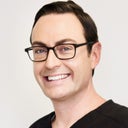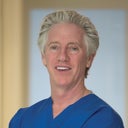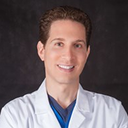Posted underEyelid Surgery q&a
Are wrinkles and hollowness a common complication in transconjunctival blepharoplasty?
Answers (12)
From board-certified doctors and trusted medical professionals
Dr. Evan Ransom, MD, FACS

Dr. Evan Ransom, MD, FACS
Board Certified Facial Plastic Surgeon
Answer
Dr. Sean R. Weiss, MD, FACS

Dr. Sean R. Weiss, MD, FACS
Board Certified Facial Plastic Surgeon
Answer
Dr. John J. Martin, Jr., MD

Dr. John J. Martin, Jr., MD
Oculoplastic Surgeon, Board Certified in Ophthalmology
Answer
Dr. James R. Gordon, MD, FACS, FAAO

Dr. James R. Gordon, MD, FACS, FAAO
Oculoplastic Surgeon, Board Certified in Ophthalmology
Answer
Dr. Brent Moelleken, MD

Dr. Brent Moelleken, MD
Beverly Hills Plastic Surgeon
Answer
Dr. Kenneth D. Steinsapir, MD

Dr. Kenneth D. Steinsapir, MD
Oculoplastic Surgeon, Board Certified in Ophthalmology
Answer
Dr. Minas Constantinides, MD
Dr. Minas Constantinides, MD
Board Certified Facial Plastic Surgeon
Answer
Dr. Steven Wallach, MD
Dr. Steven Wallach, MD
Board Certified Plastic Surgeon
Answer
Dr. Curtis Perry, MD
Dr. Curtis Perry, MD
Board Certified Facial Plastic Surgeon
Answer
Dr. William Portuese, MD
Dr. William Portuese, MD
Board Certified Facial Plastic Surgeon
Answer
More Eyelid Surgery Questions
See all Eyelid Surgery Q&AWE SEND PRETTY
EMAILS
What’s trending? Who’s turning heads? Which TikTok myths need busting? We’ve got you. No fluff, no gatekeeping—just real talk. Get our free, unfiltered newsletter.